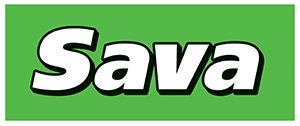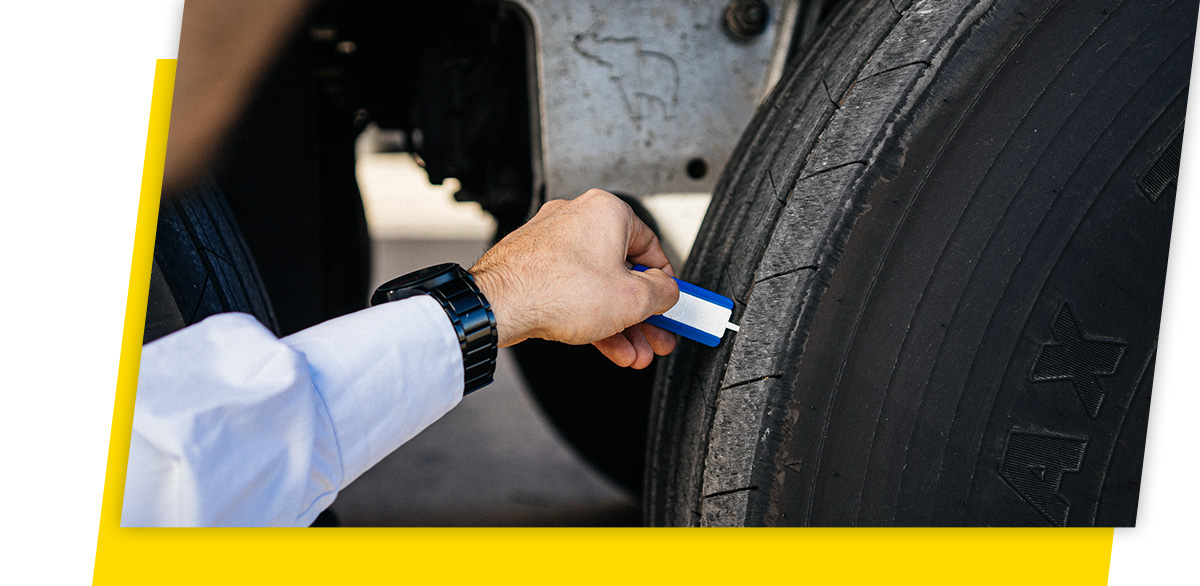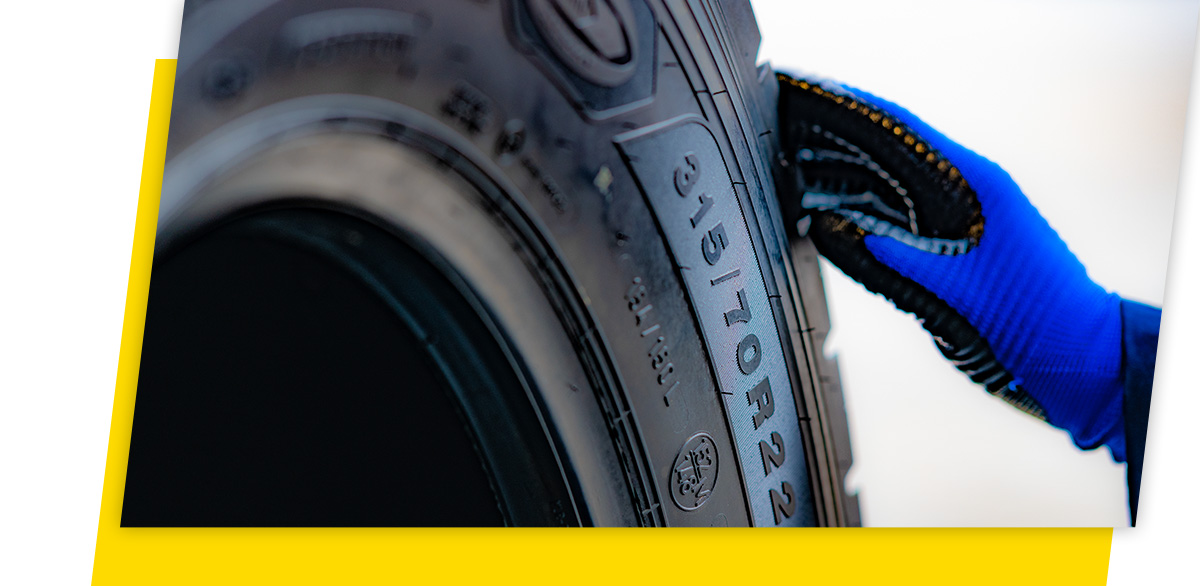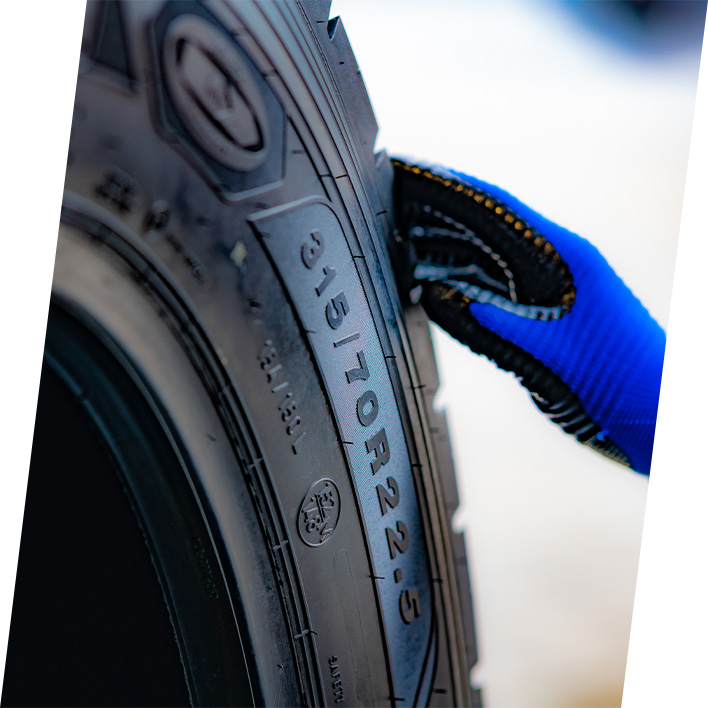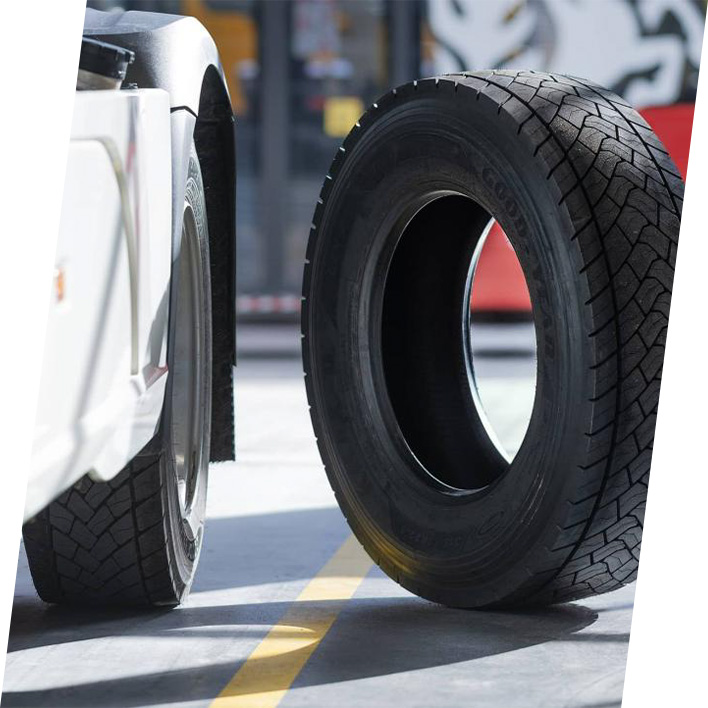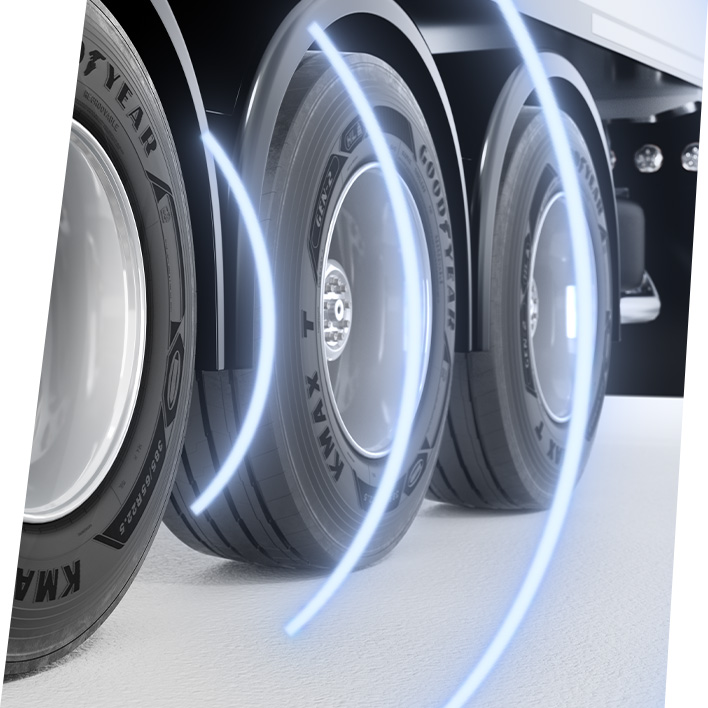1. Check your tyre pressure
Tyres lose about 1 PSI per month, which over time can lead to dangerous underinflation. The consequence? Tyre damage, increasing fuel costs, faster tyre wear and a greater risk of an accident. However, too much pressure leads to overinflation, which can also damage your tyre, reduce the grip and increase the risk of tyre failure. In other words, a very delicate balance.
How to do it right?
Goodyear TPMS is a fully integrated tyre pressure monitoring solution. Via a small sensor fitted on the rim, exact pressure data is recorded and sent to the Goodyear servers for easy access. With this solution, you’re always on top of your tyre pressure and can avoid problems through preventative maintenance. For those fleets whose vehicles make a lot of shorter trips, Goodyear DrivePoint is an excellent alternative. On-valve sensors wirelessly send tyre pressure data to two battery powered receivers, every time they come and go to the yard. Like Goodyear TPMS, the data collected by Goodyear DrivePoint is stored in the Goodyear servers and sent straight to your platfrom of choice. Perfect for those fleets that don’t need constant monitoring, but still want to stay up to date with their tyre conditions.



